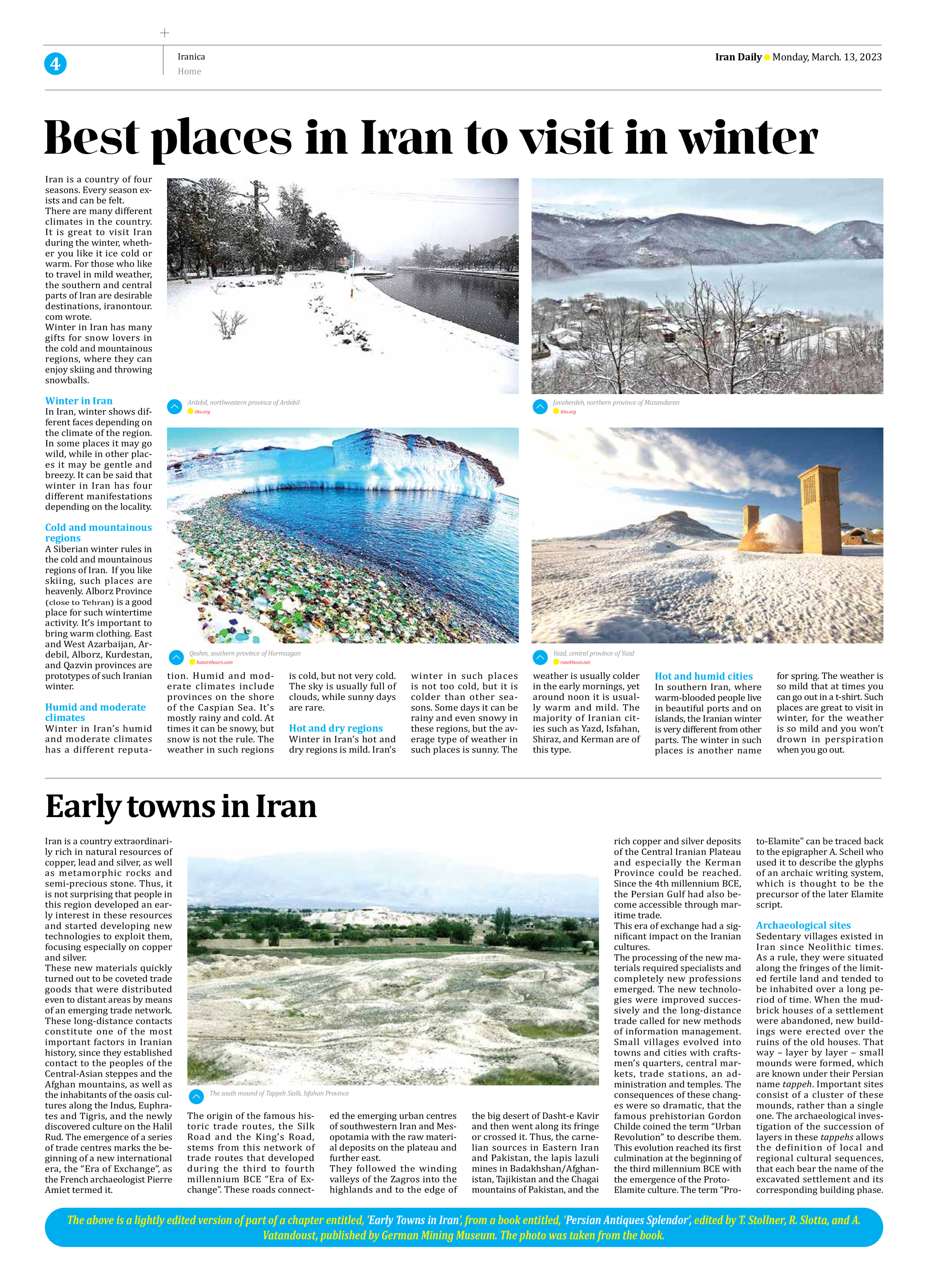
Early towns in Iran
Iran is a country extraordinarily rich in natural resources of copper, lead and silver, as well as metamorphic rocks and semi-precious stone. Thus, it is not surprising that people in this region developed an early interest in these resources and started developing new technologies to exploit them, focusing especially on copper and silver.
These new materials quickly turned out to be coveted trade goods that were distributed even to distant areas by means of an emerging trade network. These long-distance contacts constitute one of the most important factors in Iranian history, since they established contact to the peoples of the Central-Asian steppes and the Afghan mountains, as well as the inhabitants of the oasis cultures along the Indus, Euphrates and Tigris, and the newly discovered culture on the Halil Rud. The emergence of a series of trade centres marks the beginning of a new international era, the “Era of Exchange”, as the French archaeologist Pierre Amiet termed it.
The origin of the famous historic trade routes, the Silk Road and the King’s Road, stems from this network of trade routes that developed during the third to fourth millennium BCE “Era of Exchange”. These roads connected the emerging urban centres of southwestern Iran and Mesopotamia with the raw material deposits on the plateau and further east.
They followed the winding valleys of the Zagros into the highlands and to the edge of the big desert of Dasht-e Kavir and then went along its fringe or crossed it. Thus, the carnelian sources in Eastern Iran and Pakistan, the lapis lazuli mines in Badakhshan/Afghanistan, Tajikistan and the Chagai mountains of Pakistan, and the rich copper and silver deposits of the Central Iranian Plateau and especially the Kerman Province could be reached. Since the 4th millennium BCE, the Persian Gulf had also become accessible through maritime trade.
This era of exchange had a significant impact on the Iranian cultures.
The processing of the new materials required specialists and completely new professions emerged. The new technologies were improved successively and the long-distance trade called for new methods of information management. Small villages evolved into towns and cities with craftsmen’s quarters, central markets, trade stations, an administration and temples. The consequences of these changes were so dramatic, that the famous prehistorian Gordon Childe coined the term “Urban Revolution” to describe them. This evolution reached its first culmination at the beginning of the third millennium BCE with the emergence of the Proto-
Elamite culture. The term “Proto-Elamite” can be traced back to the epigrapher A. Scheil who used it to describe the glyphs of an archaic writing system, which is thought to be the precursor of the later Elamite script.
Archaeological sites
Sedentary villages existed in Iran since Neolithic times. As a rule, they were situated along the fringes of the limited fertile land and tended to be inhabited over a long period of time. When the mudbrick houses of a settlement were abandoned, new buildings were erected over the ruins of the old houses. That way – layer by layer – small mounds were formed, which are known under their Persian name tappeh. Important sites consist of a cluster of these mounds, rather than a single one. The archaeological investigation of the succession of layers in these tappehs allows the definition of local and regional cultural sequences, that each bear the name of the excavated settlement and its corresponding building phase.
The above is a lightly edited version of part of a chapter entitled, ‘Early Towns in Iran’, from a book entitled, ‘Persian Antiques Splendor’, edited by T. Stollner, R. Slotta, and A. Vatandoust, published by German Mining Museum. The photo was taken from the book.







